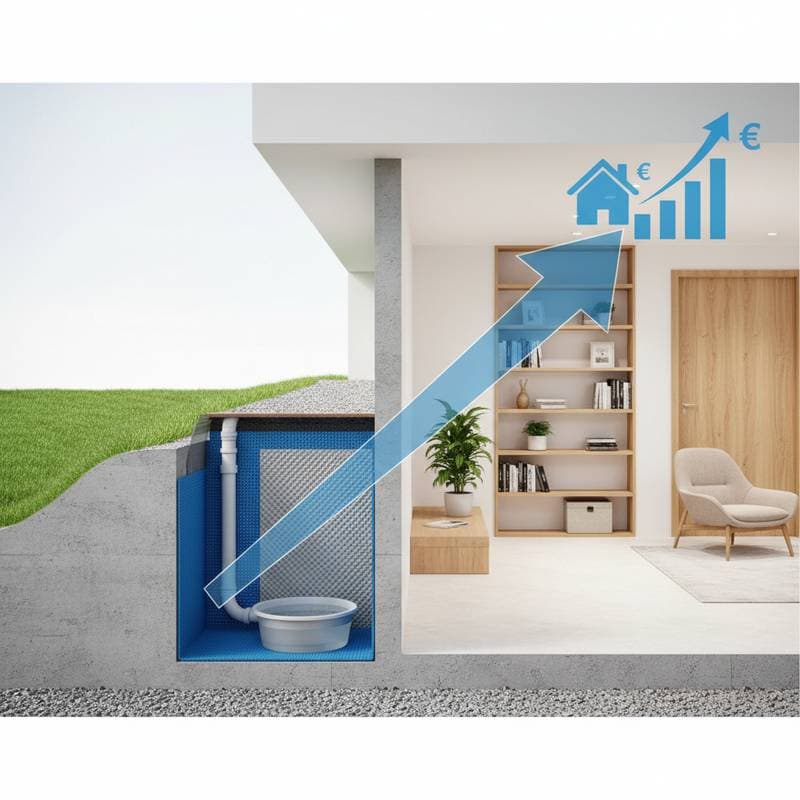2025 Bathroom Remodel Costs: Key Shifts Revealed
Homeowners planning a bathroom remodel in 2025 face more than selections of tile and fixtures. Supply chain recovery, stricter energy efficiency standards, and advancing product technologies reshape the overall cost structure. Grasping these shifts enables informed decisions that align design preferences with regulatory demands and enduring value.
Technical Overview: What Drives Bathroom Remodel Costs
A bathroom remodel integrates plumbing, electrical, ventilation, and finishing systems within a compact area. Each system follows distinct cost patterns. Material prices for porcelain, quartz, and engineered stone have stabilized following earlier volatility, yet plumbing fixture expenses rise alongside water-efficiency mandates. Labor expenses climb due to shortages of certified tradespeople and the added intricacy of installations featuring moisture barriers, digital interfaces, and efficient ventilation units.
System Overview
- Technology Type: Integrated plumbing and ventilation system
- Efficiency Rating: WaterSense fixtures (1.28 GPF toilets, 1.5 GPM showerheads), Energy Star ventilation fans
- Climate Zones: Optimal in all DOE zones with humidity control adjustments
- Average Capacity: 50–150 CFM ventilation, 40–75-gallon water heating integration
- Typical Lifespan: 20–25 years with proper maintenance
- Installation Complexity: Moderate to complex depending on retrofit or new layout
- Code: Must comply with IRC and IPC requirements for venting, GFCI protection, and moisture barriers
Regional Performance Analysis: How Climate Affects Bathroom System Design
Local climate directly impacts bathroom system performance. In humid areas, enhanced ventilation and dehumidification combat mold risks. Energy recovery ventilators gain prevalence in coastal and southern regions for superior humidity management. Colder climates benefit from radiant floor heating and insulated pipes, which minimize energy loss and enhance user comfort.
Regional water efficiency rules differ as well. Western states impose rigorous flow restrictions, affecting fixture selections and setup costs. Northern areas emphasize insulation and air sealing to shield plumbing from freeze risks.
Cost Structure Breakdown: Material, Labor, and Systems
Bathroom remodel expenses divide into three main areas.
-
Core Systems: Plumbing, electrical, and HVAC elements comprise about 40 percent of total costs. Replacing outdated galvanized pipes with PEX or copper improves longevity and water purity. Electrical upgrades frequently involve dedicated circuits for GFCI outlets, illumination, and intelligent controls.
-
Surface Materials: Tile, countertops, and cabinetry represent roughly 35 percent. Porcelain tile offers economical durability, and large-format options lessen grout upkeep while boosting accessibility.
-
Fixtures and Finishes: Toilets, tubs, showers, and vanities cover the final 25 percent. Water-efficient models carry a modest initial premium but yield ongoing utility savings.
| System Type | Efficiency Rating | Average Cost Range | Maintenance Frequency | Environmental Impact |
|---|---|---|---|---|
| Standard Bathroom | Basic flow fixtures | Moderate | Annual caulking, ventilation cleaning | Medium |
| WaterSense Upgrade | 1.28 GPF, 1.5 GPM | Higher initial, lower lifetime | Semiannual filter and aerator cleaning | Low |
| Luxury Spa Setup | High-end digital controls | High | Specialized technician checks | Medium-High |
Integration Considerations: Working with Existing Infrastructure
Merging new systems into older structures often uncovers hidden costs. Many legacy homes lack sufficient venting or wall moisture barriers. Code-mandated upgrades arise upon demolition discovery. Rewiring supports LED lights, smart mirrors, or heated flooring in such cases.
Homes with tankless water heaters require flow rate checks for multi-fixture use. Older HVAC setups benefit from independent bathroom exhaust fans on dedicated switches, aiding humidity regulation and efficiency.
Cost-Benefit Analysis: Upfront vs. Lifecycle Costs
Effective remodels weigh initial outlays against ongoing performance. A high-efficiency toilet raises fixture expenses by approximately 15 percent but cuts annual water use by up to 30 percent. LED lights and motion sensors reduce electricity demands while elevating safety.
Durable choices like reinforced tile backer boards, sloped shower bases, and sealed grout extend service intervals. Energy-efficient fans recoup investments in three to five years via reduced power draw and humidity-protected components.
| Upgrade Type | Upfront Cost Increase | Estimated Annual Savings | Payback Period | Longevity Benefit |
|---|---|---|---|---|
| WaterSense Fixtures | 15% | 25–30% water bill reduction | 4 years | Extended valve life |
| LED Lighting | 10% | 20% energy savings | 3 years | Long-lasting illumination |
| Radiant Floor Heating | 20% | 10% comfort efficiency gain | 6 years | Adds resale value |
Installation and Code Compliance
Current remodels adhere to evolved codes on ventilation, water heater performance, and electrical safeguards. Licensed contractors verify alignment with the International Residential Code and local variations. Standard features include GFCI outlets, exterior-vented exhaust fans, and moisture-resistant drywall.
Rising permitting fees reflect stricter inspections. These measures confirm proper drainage angles, vent dimensions, and waterproofing for safety and endurance.
Professional Recommendation: When to Consult Specialists
Complex projects, like tub-to-shower conversions or plumbing relocations, warrant mechanical or plumbing engineers. They calculate loads for supply and drainage adequacy.
Smart integration experts assist with connecting lights, sensors, and fans to unified controls. System commissioning tests sensor precision and efficiency ratings.
Long-Term Value and Maintenance Planning
Quality-focused remodels deliver sustained performance. Routine tasks, including fan filter cleaning, grout resealing, and caulk inspections, sustain appearance and function.
Planning Your Efficient Upgrade
Remodel costs redistribute toward materials, labor, and integrations rather than mere increases. Prioritize water savings, humidity management, and energy optimization over aesthetics alone.
Start with expert assessments of loads and ventilation. Select certified WaterSense and Energy Star products. Allocate funds for concealed upgrades like venting and sealing. Confirm compliance upfront to sidestep redesign expenses.
View the project as a comprehensive system enhancement. This approach yields superior comfort, reduced bills, and lasting resilience while upholding codes and sustainability.



